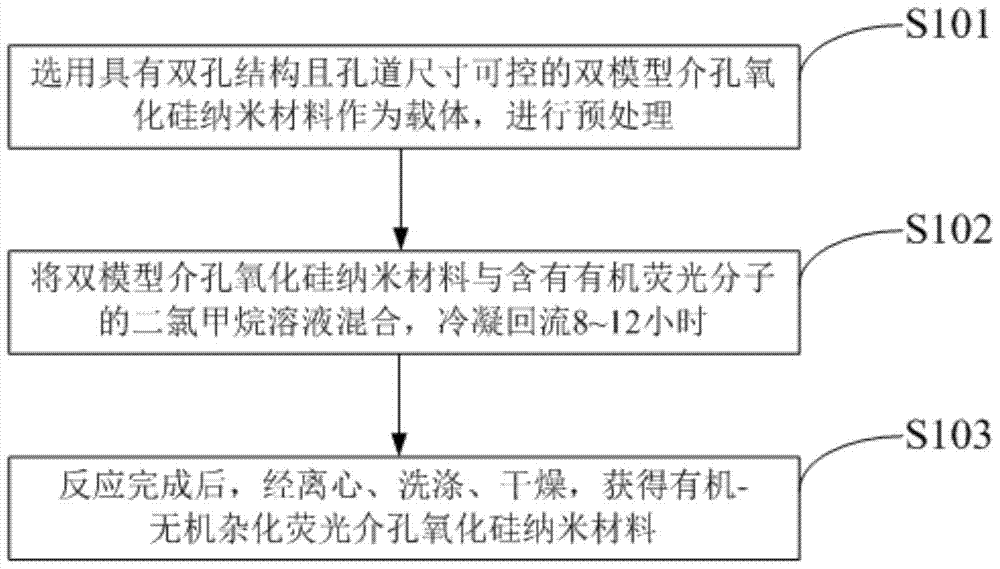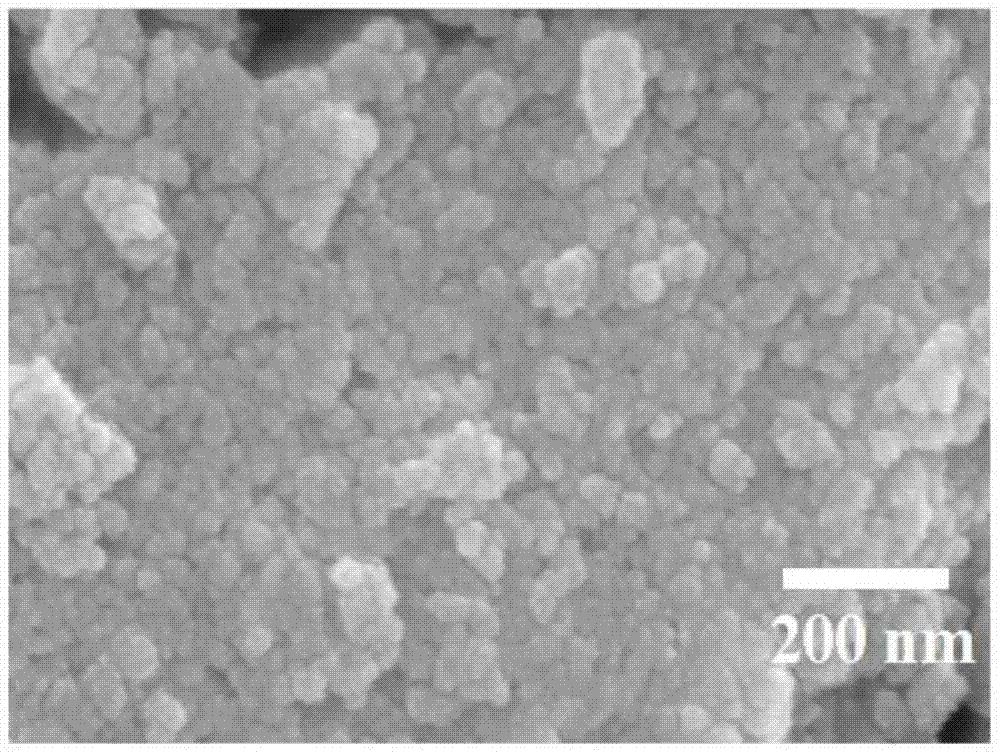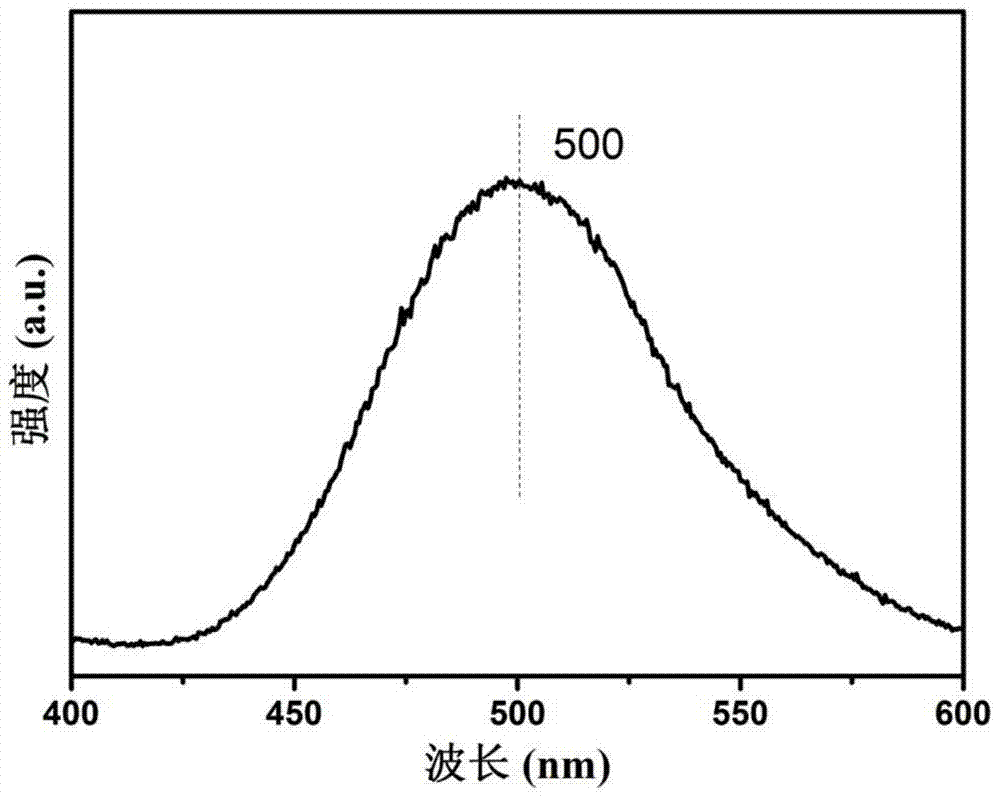A preparation method of organic-inorganic hybrid fluorescent mesoporous silicon oxide nanomaterial
A technology of mesoporous silica and nanomaterials, applied in the direction of luminescent materials, chemical instruments and methods, etc., can solve the problems of high cost and complicated operation of metal salts, and achieve the effect of simple preparation process, high fluorescence intensity and good stability
- Summary
- Abstract
- Description
- Claims
- Application Information
AI Technical Summary
Problems solved by technology
Method used
Image
Examples
preparation example Construction
[0028] Such as figure 1 As shown, the present invention discloses a method for preparing an organic-inorganic hybrid fluorescent mesoporous silicon oxide nanomaterial, the method comprising:
[0029] S101, selecting a dual-model mesoporous silica nanomaterial with a dual-pore structure and controllable pore size as a carrier, and performing pretreatment;
[0030] S102. Mix the dual-model mesoporous silica nanomaterial with a dichloromethane solution containing organic fluorescent molecules. Dichloromethane is used as a solvent for dissolving the organic fluorescent molecules to ensure the dispersion of the organic fluorescent molecules in the dichloromethane solution. Condensation Reflux for 8 to 12 hours;
[0031] S103. After the reaction is completed, centrifuge, wash and dry to obtain organic-inorganic hybrid fluorescent mesoporous silicon oxide nanomaterials.
[0032] Further, the dual-model mesoporous silicon oxide nanomaterial has mesopores of 2-4 nm and spherical part...
Embodiment 1
[0046] Dissolve 2.61g of hexadecyltrimethylammonium bromide in 104g of distilled water, stir until dissolved, pipette 8mL of ethyl orthosilicate into the solution, add 2.4mL of freshly prepared ammonia water, stir until a white lump gel is produced, filter , washed, dried, and the resulting white powder was heated to 550° C. for 5 hours and calcined to obtain a dual-model mesoporous molecular sieve with 3 nm mesoporous pores and 16 nm spherical particle packing pores.
[0047] Take 0.3g of dual-model mesoporous molecular sieves in a 25mL round bottom flask, activate in vacuum at 120°C for 3h, add 3mL of dichloromethane solution containing 0.045g of organic fluorescent molecule Z1 (R group is L-proline), dichloromethane As a solvent for dissolving organic fluorescent molecules, ensure the dispersibility of organic fluorescent molecules in dichloromethane solution; heat up to 41°C to ensure that the dichloromethane solution boils, condense and reflux for 12 hours, centrifuge, was...
Embodiment 2
[0049] Using the experimental process of Example 1, the difference is that 3 mL of dichloromethane solution containing 0.0003 g of organic fluorescent molecules is added, and the resulting solid powder is the fluorescent mesoporous silica nanomaterial Z1-BMMs-0.1, and its fluorescence peak is located at at 491nm.
PUM
| Property | Measurement | Unit |
|---|---|---|
| mesopore | aaaaa | aaaaa |
Abstract
Description
Claims
Application Information
 Login to View More
Login to View More - R&D
- Intellectual Property
- Life Sciences
- Materials
- Tech Scout
- Unparalleled Data Quality
- Higher Quality Content
- 60% Fewer Hallucinations
Browse by: Latest US Patents, China's latest patents, Technical Efficacy Thesaurus, Application Domain, Technology Topic, Popular Technical Reports.
© 2025 PatSnap. All rights reserved.Legal|Privacy policy|Modern Slavery Act Transparency Statement|Sitemap|About US| Contact US: help@patsnap.com



